The world of software development has seen a transformative shift in recent years with the rise of the Low-Code and No-Code Revolution. These platforms have democratized application development, allowing individuals with limited coding experience to create sophisticated software solutions. While low-code and no-code platforms have already revolutionized the industry, the integration of generative artificial intelligence (AI) promises to take them to new heights. In this blog, we will explore why generative AI will turbocharge low-code and no-code development.”
Understanding Low-Code Development
Low-code development is a methodology and approach to software development that is designed to simplify and expedite the process of creating software applications. It achieves this by providing a visual interface and a set of pre-built components, which developers can leverage to create applications with minimal manual coding.
Here’s a breakdown of key aspects of low-code development:
Visual Interface:
Low-code platforms typically offer a visual development environment, where developers work with graphical elements and components rather than writing extensive lines of code. This interface often resembles a drag-and-drop canvas, making it intuitive and user-friendly.
Pre-built Components:
Low-code platforms come with a library of pre-built components and modules that cover common functionalities like user authentication, data storage, and user interfaces. Developers can select these components and customize them to fit their specific application requirements.
Reduced Coding:
With the visual interface and pre-built components, the need for extensive manual coding is significantly reduced. Developers can achieve complex functionalities by simply configuring and connecting these components. This accelerates the development process and makes it more accessible to a wider range of individuals, including those with limited coding experience.
Rapid Prototyping:
Low-code development is well-suited for rapid prototyping and iterative development. Developers can quickly create prototypes of their applications, gather feedback, and make improvements in a shorter time frame compared to traditional coding methods.
Integration Capabilities:
Low-code platforms often offer integration capabilities, allowing developers to connect their applications with external services, APIs, or databases seamlessly. This enables the creation of comprehensive, connected solutions.
Flexibility:
While low-code platforms provide pre-built components, they are designed to be flexible and customizable. Developers can tailor the components to meet specific project requirements and achieve the desired look and functionality.
Understanding No-Code Development
No-code development takes simplicity and accessibility to a higher level by eliminating the need for traditional coding altogether. It allows individuals with little to no coding experience to create functional applications using visual interfaces, templates, and predefined logic components.
Here’s an in-depth look at no-code development:
Visual Development:
No-code platforms rely entirely on visual development interfaces. Users interact with the platform through a graphical user interface (GUI) that offers an array of building blocks and templates.
Templates:
No-code platforms often provide templates for various types of applications, such as e-commerce websites, customer relationship management (CRM) systems, and workflow automation tools. Users can select a template that aligns with their project goals.
Predefined Logic:
No-code platforms come equipped with predefined logic components, such as if-then statements and workflow triggers. Users can configure these components to define the behavior and logic of their applications.
Accessibility:
No-code development is designed to be accessible to a wide audience, including business analysts, entrepreneurs, and subject matter experts who may not have coding skills. It empowers these users to bring their creative ideas to life without the need for technical expertise.
Quick Deployment:
No-code applications can be deployed rapidly. Users can create functional prototypes or fully operational applications in a short amount of time, making it ideal for responding quickly to changing business needs.
Scalability:
While no-code platforms simplify the initial development process, they may have limitations when it comes to handling highly complex or customized requirements. For such cases, integration with low-code or custom development may be necessary.
The Power of Generative AI
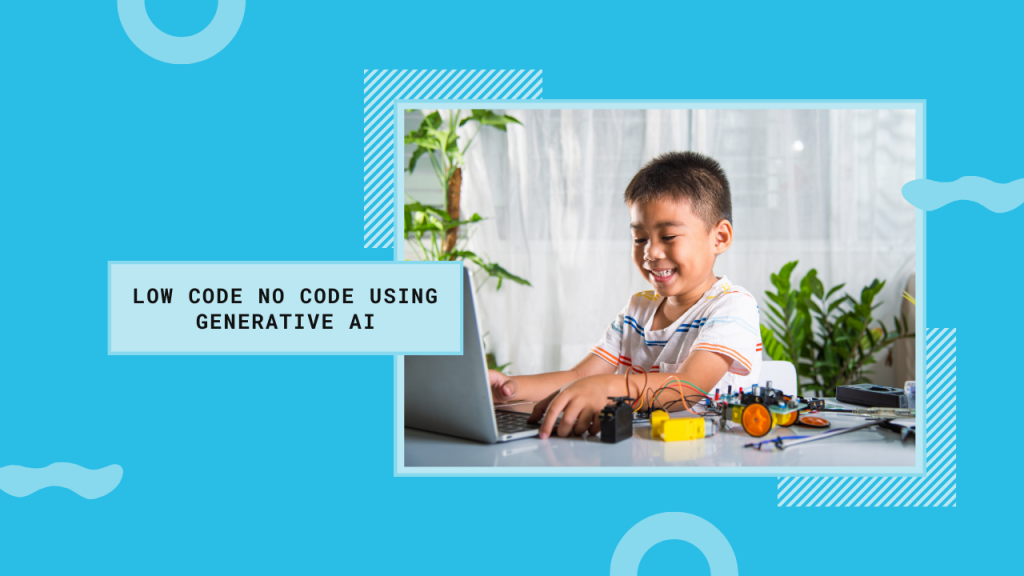
Generative AI, often referred to as “AI creativity,” is a technology that uses deep learning algorithms to generate content, including text, images, music, and even code. In the context of low-code and no-code development, generative AI can play a transformative role in several ways:
Code Generation:
Generative AI can automatically generate code snippets or even entire modules based on high-level requirements and user input. This capability bridges the gap between the user’s vision and the technical implementation, reducing development time and eliminating coding errors.Customization and Personalization:
Generative AI can adapt to the specific needs of individual projects. It can generate code that aligns perfectly with a project’s requirements, ensuring that low-code and no-code applications are highly tailored and efficient.Debugging and Optimization:
Generative AI can assist in identifying and rectifying coding errors. It can analyze code for vulnerabilities, performance bottlenecks, or potential improvements, making applications more robust and efficient.Seamless Integration:
Generative AI can seamlessly integrate with existing low-code and no-code platforms, enhancing their capabilities without disrupting the development process. It acts as a supportive tool rather than a replacement for human developers.
Benefits of Combining Generative AI with Low-Code/No-Code Development
The integration of generative AI into low-code and no-code development platforms offers a multitude of compelling advantages:
Speed and Efficiency:
By automating coding tasks, generative AI expedites the development process. Developers can create applications at a significantly faster pace, reducing time-to-market and enabling businesses to respond to demands more effectively.Democratization of Development:
Generative AI further lowers the barrier to entry for software development. Even individuals without coding expertise can craft complex applications, fostering innovation and creativity across diverse user bases.Error Reduction:
AI-driven code generation minimizes the risk of human errors, leading to more reliable and secure applications. The code generated is consistent and adheres to best practices.Continuous Learning:
Generative AI improves over time through machine learning. It learns from previous projects and user feedback, becoming increasingly proficient at generating code that aligns with user expectations and industry standards.Cost Savings:
The increased development speed and reduced reliance on traditional developers can result in significant cost savings for organizations. Budgets can be allocated more efficiently, with resources focused on high-value tasks.Scalability:
Applications generated with the aid of generative AI are designed with scalability in mind. This ensures that as user loads and data volumes grow, the applications remain robust and performant.Innovation:
With the time and cost savings provided by generative AI, organizations can allocate resources to innovation, exploring new features and functionalities that can differentiate their products and services in the market.
Challenges and Considerations
While the potential benefits of combining generative AI with low-code and no-code development are substantial, some challenges and considerations must be addressed:
Quality Assurance and Testing:
While generative AI can expedite code generation, it may not always produce bug-free or efficient code. Developers must thoroughly test and validate the generated code to ensure it meets quality and security standards. Incorporating robust testing practices is essential to detect and rectify any issues early in the development process.Ethical Concerns and Bias:
Generative AI algorithms can inherit biases present in the data they were trained on. When generating code or applications, this can result in biased or discriminatory outcomes. Developers and organizations must actively address bias by implementing fairness and bias detection tools, as well as by promoting diversity and inclusivity in AI development teams.
Human-AI Collaboration:
Integrating generative AI into low-code and no-code platforms requires a new level of human-AI collaboration. Developers need to understand how to effectively work alongside AI tools, ensuring that the generated code aligns with the project’s goals and maintains consistency with existing codebases.
Security:
The automatic generation of code by AI introduces potential security vulnerabilities. Hackers might exploit patterns or weaknesses in the generated code. Security measures, such as penetration testing and code review, are crucial to identify and mitigate these risks.
Privacy and Data Handling:
When using generative AI, especially in no-code platforms that may involve personal data, handling user data ethically and responsibly is paramount. Compliance with data privacy regulations, like GDPR or CCPA, is essential to prevent data breaches and legal consequences.
Scalability:
Scaling applications built with generative AI can be a challenge. Developers need to ensure that the generated code is scalable to accommodate increasing user loads and data volumes. This requires careful architectural planning and performance optimization.
User Training and Adaptation:
While low-code and no-code platforms aim to be user-friendly, incorporating generative AI features may require additional training for users to leverage them effectively. Ensuring that users understand how to utilize AI-generated code and integrate it seamlessly into their projects is essential.
AI Transparency:
Generative AI can be viewed as a “black box” because it generates code based on complex neural networks. Understanding how AI arrived at a particular solution can be challenging. It’s crucial to enhance AI transparency and interpretability to build trust among developers and users.
Resource and Cost Implications:
Integrating generative AI into low-code and no-code platforms may come with resource and cost implications. Organizations need to assess the computational power and infrastructure required to support AI capabilities and consider the associated expenses.
Legal and Intellectual Property Issues:
Determining ownership and intellectual property rights for AI-generated code can be complex. Organizations should establish clear guidelines and agreements regarding ownership, licensing, and usage rights.
Regulatory Compliance:
Depending on the industry and region, there may be specific regulatory requirements for software development. Ensuring that AI-generated code complies with these regulations is essential to avoid legal complications.
Also read :”Top 10 no-code AI tools“.
Conclusion
Generative AI is poised to revolutionize low-code and no-code development, making software creation faster, more accessible, and efficient. By automating code generation, customization, and optimization, generative AI empowers individuals and organizations to build sophisticated applications without extensive coding knowledge. As this technology continues to evolve, it promises to further democratize software development, drive innovation, and reshape the landscape of the tech industry.








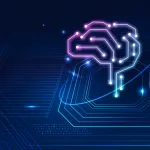
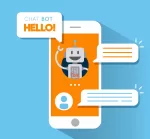
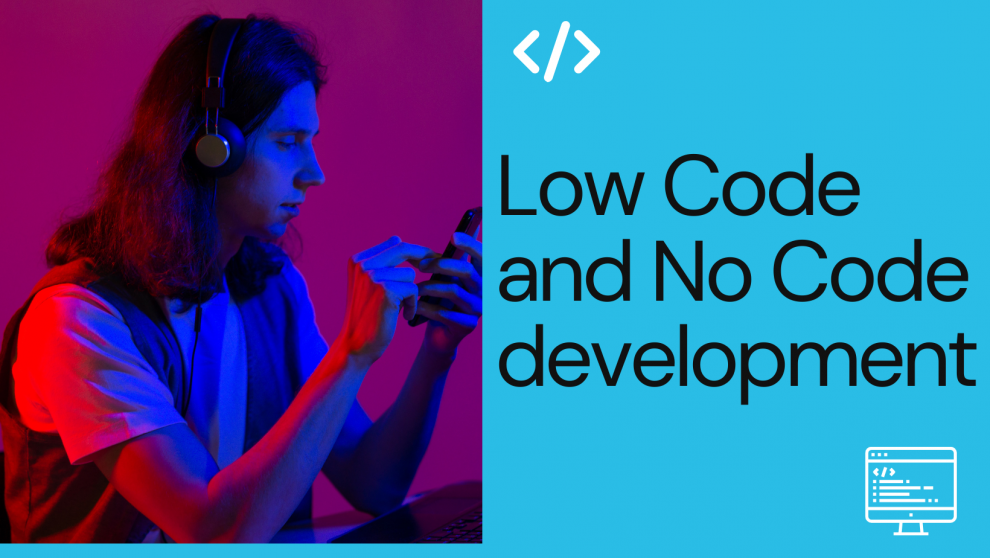








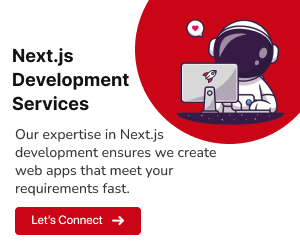



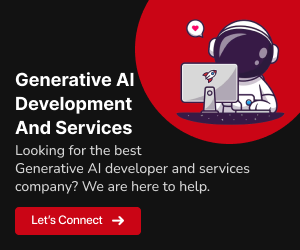


Add Comment